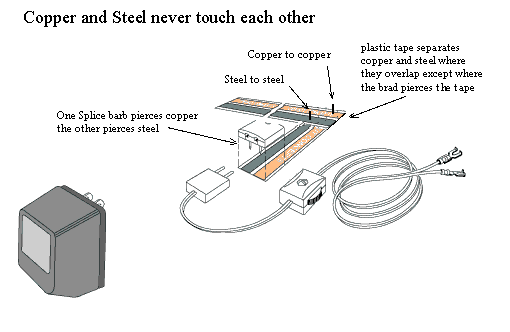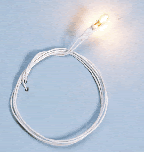


Electricity is measured in "volts" and "Amps".
Together they = "Watts"
Volts: electrical pressure. Like water pressure, volts describes how hard an electron pushes to get through the wire - so, at a higher voltage, more electrons will flow through a load (like a light bulb) per second. More electrons flowing = more heat = more light from the bulb (and shorter life). Conversely, less voltage means less light and longer life. Household wiring uses 110 volts (250 volts in some parts of the world) which is dangerous to touch. Dollhouse wiring is usually 12v (volts) which is not dangerous. You must, however, use light bulbs (the "load") that are rated for 12 to 16 volts, or they won't light up at all. 12v for dollhouse wiring is supplied by a transformer, which changes the 110v of household electricity to 12v for dollhouse electricity.
Amps: Amps is a measure of electrical volume (like gallons) Amps (amperes) tells you how many electrons pass through a load per second (a very large number!). You use amps to balance the size of your supply transformer to the total of the loads (light bulbs) in the circuit. Dollhouses and dollhouse transformers often list the amps in milliamps (1/1000 amps) so 500 milliamps = 1/2 amp.
Watts: Power or heat. Watts is amps x volts .
A 60 milliamp bulb at 12V will draw (60 x 12 =) 720 milliwatts or .72 watts